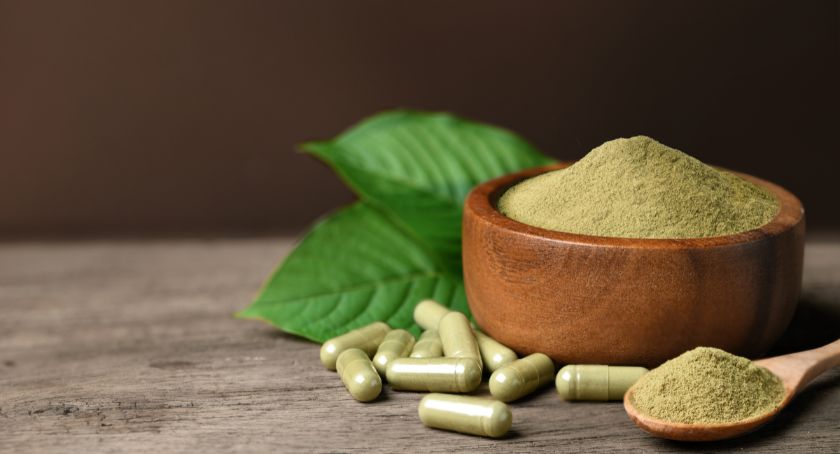Features
The Lifelong Pursuit of Strength
Scientific evidence suggests maintaining muscle strength and function is a critical factor in lifelong health and wellness.

By: Mike Montemarano

Increasing the strength, size, and performance of muscles through an exercise regimen and proper nutrition is important not just for athletes, bodybuilders, and extremely active people, but for everyone seeking to maintain vitality and wellness throughout all stages of life.
While the muscle health market was once skewed toward elite athletes, gaining and preserving strength, mobility, and muscle mass is becoming an increasingly important area in modern life. Adults and children alike are often sedentary as they spend more time in front of screens, and this increase contributes to age-related declines in muscle mass, which can begin to occur as early as age 30. According to the American Heart Association, sedentary jobs have increased 83% since 1950.
As more research reveals a plethora of benefits associated with maintaining healthy muscle mass, dietary supplements with these clinical endpoints are shifting to the mainstream. Interest has grown in not just athletes, but among people of all ages and walks of life who want to stay active and physically perform at their best regardless of their current level of fitness. “The interest in muscle health transcends generations, however, the path to get there is slightly different for each consumer depending on their fitness goals and age,” said Elyse Lovett, vice president of marketing for Nutrition21.
“Our muscles play a vital role in our health at all stages of life, from allowing movement and balance to contributing to physical strength, organ function, immunity, and wound healing, said Daniela Boyd, vice president of global sales and marketing for Advance Protein. “Muscles are the largest component of our total lean body mass.”
Top ingredients featured in the majority of muscle health supplements include protein isolates and concentrates, with a wide variety of sources, as well as protein constituents such as peptides and amino acids. However, this market is expanding to include other essential nutrients and bioactive compounds, including amino acid metabolites, antioxidants, vitamins/minerals, and botanicals with clinically-backed ties to muscle protein synthesis, exercise/inflammation recovery, overall metabolism, bone and joint health, and more.
The muscle health market, like some other categories within the nutraceuticals space, faces the pressure of having to deliver noticeable health benefits within a certain timeline. “Not seeing visible results despite training hard can be extremely demotivating,” said Angie Rimel, marketing communications manager for Gelita. “For this reason, more and more consumers are looking to make smart food, beverage, and supplement choices that deliver motivation in the form of results that are noticeable and also quickly achievable.”
According to Steve Fink, vice president of marketing for PLT Health Solutions, the muscle health market can be categorized in a multitude of ways. Consumers have nuanced goals and needs depending on the type of sport or activity they’re engaging in, along with demographic differences. As the market changes, and segments blur—such as bodybuilding, endurance, high-intensity interval training (HIIT), active-lifestylers, and weekend warriors—it’s important for formulators to keep in mind how people use their products. For example, goals can range from high-performance, maximizing protein, pre-workout, post-workout, recovery, and even condition-specific usage, such as joint health, skin health, immune health, and more.
“All are interested in muscle building, but to different extents,” Fink said. “Endurance and strength are also significant muscle health benefits that consumers want. Science shows us that good muscle health improves performance and serves as a foundation for a whole range of healthy states. Pre-workout, post-workout, and daily use products are those we typically see in the muscle health market. But we increasingly see a muscle health component in areas like weight management products where the goal is to increase lean muscle mass as a contributor to weight control. Finally, there is increasing interest on the part of seniors in sarcopenia where muscle health products can play a role in maintaining muscle mass.”
Major market trends include clinically-studied ingredients that offer rapid, consistent results, he added. “Other trends include offering novel delivery systems—from powders and pills to beverages and foods. This will take a special class of ingredient. Finally, results must move the needle for consumers. Results are necessary for these audiences.”
Demand has increased for clinically-backed solutions that address recovery, with goals such as restoring or maintaining muscle during a period of inactivity or injury, which call for more acute, fast-acting formulations, according to Larry Kolb, president of TSI Group Ltd.
Meanwhile, Tim Hammond, vice president of sales and marketing for Bergstrom Nutrition, also noted the need for short-term care can vary among age groups, with Millennials often in need of “addressing injuries caused by active use and preventing future ailments,” while Generation X is more preoccupied with the aches and pains of aging. In Baby Boomers, some acute benefits to address include pain relief, and “diminishing symptoms associated with diseases of aging like sarcopenia and osteo-related issues, in order to increase quality of life and daily function.”
He added that, with the mainstreaming of sports nutrition as a category that goes beyond bodybuilding, with a historical focus on men, the industry is evolving to fill in a shortage of scientifically valid data for female athletes.
“With the drive, focus, skill, and physicality of female athletes being showcased on a global scale, recognizing how nutritional needs can differ significantly between genders is an evolution within the industry that presents exciting opportunities,” Hammond said. “Unfortunately, the opportunity to provide women with quality nutritional support has been underdeveloped. Bergstrom Nutrition is actively investing in female-focused OptiMSM research to add to existing published research on endurance and resistance athletes showing reductions in muscle pain, damage, and soreness. A new focus on the often-overlooked dietary needs of the female population and their requirements for proper metabolism presents growth possibilities, new marketing challenges, and creative formulation opportunities.”

The COVID-19 Impact
Like every other market, brands in the muscle health space have been especially mindful of the lifestyle adaptations consumers have made during the COVID-19 pandemic. Fortunately, several surveys indicate that, across the board, rates of exercise among U.S. consumers haven’t declined much, even with social distancing restrictions and quarantines. In fact, those who had relatively higher rates of exercise pre-COVID are exercising more now, along with a crop of newcomers to the sports nutrition space who emerged in 2020.
“Things did slow down during Q2 of last year. Then, as we have in other phases of our lives, the industry adjusted,” said Fink. “We saw a significant uptick in new product development in the category and in the second half of 2020 and we are looking forward to some great new products coming onto the market in 2021.”
PLT Health solutions leaned heavily on three ingredients it offers in the active/sports nutrition market, including Zynamite PX, RipFACTOR (a botanical complex formulated for gains in endurance, strength, and muscle growth), and Dynagenix.
“Each of these ingredients was a step-change solution for the industry,” Fink noted. “Zynamite PX addressed mean and peak power issues in a low dose that clinical studies showed was effective in one hour. Dynagenix was targeted at the recovery segment of sports nutrition and is the first ingredient that is clinically demonstrated to improve both joint and muscle recovery, getting people back in the game faster.”
The launches of all three products are going well, he continued. “RipFACTOR, in particular, was featured in a number of new products in Q4 2020 and is slated for another dozen in early 2021. We are looking at the potential for millions of units featuring this product sold in 2021. For PLT, the lesson we learned is that, regardless of economic or market conditions, there is always room for really innovative ingredient solutions that address pain points and deliver demonstrable, significantly better results. Disruptive solutions thrive in disruptive times.”
As life returns to some normalcy, Lovett said it will be important to make sure consumers continue to make time for fitness routines. “Equipment and products they used to support their journey will be key to keeping these new consumers interested in the long-term.”
With activity levels reaching new heights, consumers are also going to greater lengths to learn more about the health benefits offered by nutrition products, and are more discerning about the science behind what they buy.
“With information available 24 hours a day at our fingertips, consumers are becoming more and more educated,” noted Hammond. “Living in this information age has most seizing the opportunity to learn more about their health in new ways. Their empowerment has them looking to products that display all ingredients, and how they affect bodily mechanisms. This sentiment aligns well with OptiMSM because of its manufacturing in a single-use designated facility, and Bergstrom Nutrition’s commitment to continuous research on MSM.”
However, there is some concern regarding how well an aging population has fared with having to adapt. While many younger people are settling into new active nutrition strategies, the lack of mobility and movement restrictions imposed by the pandemic is of special concern to the elderly, Boyd said.
With home-bound lifestyles and limited access to traditional exercise facilities, many consumers have seen success augmenting their approach to exercise, spending more time outdoors and in nature. Likewise, several surveys have concluded that motivations behind exercise are now more skewed toward resiliency, preventive healthcare, and the perception that exercise is a panacea.
Maria Stanieich, marketing manager for Kyowa Hakko, cited a 2021 report from Nutrition Business Journal, which surveyed 900-plus U.S. consumers between the ages 18-73 who were asked, “How does your current typical weekly fitness activity compare to typical weekly fitness activities during this same timeframe a year ago (following the initial COVID lockdown in the U.S.)?” At least 70% responded no-change or an increase in activity, Stanieich noted. “This may be attributed to the change experienced in the typical active lifestyle, less focus on the gym, and more focus on outdoor activities. This will determine a need for general and everyday health and weight maintenance as a higher focus for the nutrition industry.”
According to Euromonitor International, consumers have felt the urge to focus on their health constantly over the past year, and they’ve become more attuned to a number of chronic conditions previously left unchecked. Among the most common reported issues were joint and muscle pain concerns, which now affect around 35% of consumers, compared to 28% pre-pandemic.
Based on 2021 survey findings, Matthew Oster, head of consumer health for Euromonitor concluded, “There does seem to be some influence of the circumstances of COVID that are forcing consumers to at least consider a need for frequent exercise, either as a stress reducer or as a way to break up the monotony of the day. But I’m partial to the idea that reportedly higher rates of exercise are part and parcel of this expanded consideration of healthy living as a means of disease prevention.”

Protein Progression
Muscle mass, defined as the percentage of muscle in relation to overall body composition, is constantly changing as the body shifts between breaking down muscle proteins to derive energy or synthesizes muscle proteins, aiding in muscle growth, development, and strength. In this state of constant change, the best way to tip the scales toward a greater amount of time spent in the anabolic state is a combination of nutrition, exercise, and other lifestyle changes known to exacerbate anabolic resistance.
There are fundamental differences in the composition of proteins. Following a long-standing effort to offer “complete” (containing all nine essential amino acids) proteins, many brands are now seeking protein sources that naturally contain other bioavailable nutrients, and more optimized proportions and ratios of essential amino acids, to further their competitive edge.
“A high-quality protein depends on the amount of protein per serving, protein digestibility, and amino acid content,” Boyd said. “Our body can produce many amino acids on its own, but we need to get the nine essential amino acids (EAAs) through our diet to function properly.”
With that said, the gold standard for protein composition is the protein-digestibility-corrected amino acid score (PDCAAS), which evaluates not only the quantity of amino acids consumed, but how much of that protein is actually available to the body upon consumption. “A Perfect Protein (Advance Protein’s recently launched marine-sourced ingredient) meets the required amount of the nine essential amino acids by the World Health Organization (WHO). It is one of the highest quality proteins, according to the [PDCAAS], with a score of 1.0,” Boyd said. “Consumers are seeking a high-quality nutritional protein that is also sustainable and has a low environmental impact. From a nutrition perspective, we see consumers looking for rapid digestibility, high nutrient score, flavorful, and a sustainable protein source.”
Plant-based protein innovators have been boosting their PDCAAS scores, as well, with continued efforts to innovate and reformulate well-known plant protein products. Beyond performance metrics, there is a certain preference among a large block of consumers for simple, easily-recognizable ingredients with minimal processing involved.
The shift toward plant-based diets will continue to create new growth opportunities for protein sources perceived as superfoods such as almonds, said Laura Gerhard, director of strategy and planning for Blue Diamond’s Global Ingredients Division. Key to the future growth of plant-based proteins will be innovations with protein bars specifically, and almonds have an advantageous flavor profile in an area where taste remains the most important attribute to mainstream consumers, she added.
“Many plant proteins have an undesirable gritty texture and ‘earthy’ or bitter aftertaste that is unappealing to consumers,” Gerhard said. “Flavor and texture maskers can be added to improve plant-based formulations, but these ultimately detract from a clean label—another factor that is highly valued by consumers.”
“In general, amino acid composition is different between plant and animal-based protein,” noted Stanieich. “EAA concentration in animal-based protein is relatively higher than plant-based protein. Also, glutamine and glutamic acid shows similar trends. EAA, especially leucine, is a key amino acid shown to stimulate muscle protein synthesis. From an amino acid composition point of view, it is worth consideration to add specific amino acids in plant-based protein to enhance nutritional benefit in order to remain relevant in a more complex market and meet consumer demand.”
Better still would be to offer consumers an optimized, complete amino acid profile which checks off the marks on several trending attributes in broader food demands. Ensuring that products are clean label, sustainable, and as close to a natural state as possible are further advantages to protein powders that contain other essential micronutrients.
“Proteins with a high amount of branched-chain amino acids (BCAAs) have been shown to build muscle, decrease muscle fatigue, and alleviate muscle soreness,” said Boyd.
Advance Protein’s new A Perfect Protein ingredient, in addition to producing low-to-zero waste and a minimal carbon footprint, boasts additional nutrients in their natural form, providing bioavailability and formulation advantages. “APP holds an incredible amount of BCAAs,” Boyd said. “It also contains naturally-occurring minerals and marine collagen.”
Advance Protein looked to the seas for its premier protein ingredient to speak to some sustainability concerns that are inherent in plant-based options. While not fit for vegans, marine protein sources don’t require the use of land, fresh water, pesticides, or enzymes and acids used in conventional harvesting practices, Boyd said. “The rise of ‘flexitarians’ is reinforcing the food industry to focus on the segment of consumers who are trying to reduce land-animal-protein consumption rather than avoid it altogether.”
Offering well-rounded nutrition, likewise, is a strong point for the success of almond protein powder, according to Gerhard. “While there are many protein sources on the market today, few are true superfoods that can offer well-rounded nutrition,” as almonds are also the “tree nut highest in six other nutrients, including fiber and calcium. Ingredients like almond protein powder allow product developers to bring forward a variety of key nutritional benefits that other protein sources can’t offer.”

The Momentum of Muscle Gains
While protein is certainly critical to muscle development, it’s not the be-all-end-all of a muscle-boosting regimen. While there is a dose-response relationship between protein intake and muscle growth, the amount of protein one can take in at once is limited. At a certain point protein begins to oxidize in the body and uptake into the muscles stops.
A combination of nutraceutical ingredients and exercise, however, can increase the body’s protein synthesis capabilities, bringing a dose-response relationship to protein to greater heights.
Evidence regarding the role that collagen might play in muscle mass and body composition is emerging. Particular combinations of collagen types, such as Gelita’s Bodybalance, have been evidenced in clinical studies to support significant improvements in muscle health, including populations most critically affected by muscle health issues, in addition to benefits to joints and tendons. Ongoing research suggests the impact collagen peptides have on various metabolic processes, including stimulation of the metabolism of certain proteins (including mTOR) and fat, is the reason for this added benefit.
“The effectiveness of Bodybalance intake has been verified in scientific studies,” said Rimel. One randomized, double-blind, placebo-controlled study, for example found that post-exercise collagen supplementation over 12 weeks was able to achieve significant improvements to fat-free mass, strength, and reduced waist circumference in 114 healthy, less active men between the ages of 30 and 60.
Two studies also evaluated the effects of collagen peptide supplementation in people with sarcopenia, with one study finding significant improvements in fat-free mass and muscle strength superior to a placebo group among a population of 60 sarcopenic men with a mean age of 72 who underwent a 3-month resistance training program. “These results clearly illustrate the huge potential that collagen peptides have to improve quality of life,” said Stephan Hausmanns, vice president of Gelita’s Health & Nutrition Business Unit. “We all know that achieving quick and noticeable results is crucial in keeping motivation for physical activity alive.”
Boyd echoed the sentiment surrounding the emerging evidence on collagen’s role in muscle support, as well as that of other micro- and macronutrients in regard to workouts. APP’s diverse profile of beneficial micronutrients each could play some role in preventing anabolic resistance and improving exercise performance.
“Available evidence suggests magnesium is essential to muscle contraction and relaxation,” Boyd said. “Lower levels of magnesium may impact exercise performance. Calcium provides an increase in thermogenesis which may boost metabolism and stimulate fat-burning. APP contains marine-collagen and it holds a complex array of minerals. These minerals and collagen are naturally occurring—not added to the product—therefore they are easily absorbed by the body.”
Lovett pointed to Nutrition21’s Velositol, a patented complex of amylopectin and chromium, which offers synergistic benefits to proteins, formulated to be featured in protein-packed functional foods and beverages for its ability to amplify muscle protein synthesis in conjunction with whey protein, plant protein, or BCAAs.
One 2020 study, for example, substantiated that this complex, in addition to 15 grams of whey protein daily could significantly improve measures of muscle endurance, strength, and power. Over a four-week supplementation period, 35 recreationally active male subjects between 35 and 55 years of age were subject to one-rep max and repetitions to failure tests on bench press, squat, and vertical jump power. Results found significant improvements for the Velositol group compared to those consuming either 15 or 30 grams of whey protein alone.
Beyond standard amino acids, Kolb noted that one of TSI Group, Ltd.’s flagship ingredients, myHMB, takes amino acids formulation to an even more micro level, with evidence supporting the use of a specific metabolite of leucine known as HMB.
“We know that optimal muscle health is a balance of two processes: building and breaking down of protein in the muscle,” Kolb said. “The protein we consume is used in this building process. If protein synthesis is greater, muscle size and function increase. However, if protein breakdown is greater, muscle size and function decrease. And when these are in balance, a healthy muscle mass is maintained. However, the signals that turn on synthesis or reduce breakdown are not always in balance […] HMB is unique because it acts on both sides of this muscle protein equation. On one side, HMB helps activate the key machinery responsible for protein synthesis in the muscle. On the other, HMB decreases the major pathways for protein breakdown.”
PLT Health Solutions’ ingredient RipFACTOR, launched in January 2020, has made a statement for the role botanicals have in the muscle health marketplace, Fink said. “After a 7-year, multi-million-dollar development process involving in-depth screening of more than 400 pre-selected botanicals for their ability to promote enhanced strength, endurance, and muscle growth, RipFACTOR was brought to market as a best-in-class nutrition ingredient with the safety, regulatory, and clinical substantiation required to power leading global sports nutrition brands,” he said.
The water-dispersible, delivery-format-flexible combination of Ayurvedic herbs Sphaeranthus and Magnifera indica has demonstrated strength, endurance, muscle-building, and testosterone-enhancing effects in both trained and untrained male participants in two human clinical trials. “In both studies, these results were accompanied by significant increases in free testosterone and improvements in the testosterone-to-cortisol ratio. This hormonal balance improvement supports protein synthesis and muscle building,” Fink said, with results becoming significant starting at 14 days and achieving the sought-after health benefits across the 56-day durations of both clinical trials. Among them, it was found in the second trial that, compared to a control group, those who took RipFACTOR were able to complete double the amount of exercise until exhaustion, at dosage volumes comparable to those used as a standard for creatine.
Many consumers today are also focused on quicker recovery and safeguards against injury, be it from traditional exercise or simply from physically challenging, day-to-day activities, Hammond said, which is where OptiMSM, Bergstrom Nutrition’s methylsulfonylmethane ingredient, fits the bill.
“OptiMSM provides nutritional support for mobility by keeping joints and connective tissue healthy,” he said. “MSM also enhances recovery by accelerating muscle repair and mitigating the pain, muscle damage, and soreness following intense training. Plus, MSM also bolsters the immune system following exhaustive training. Interestingly, MSM has antioxidant properties but is not a direct antioxidant, a significant distinction when considering sports nutrition and aging. Direct antioxidants can blunt the adaptive response to exercise and the body’s intrinsic ability to combat oxidative stress, which is associated with decreased longevity. MSM improves the body’s innate antioxidant pathways, like glutathione or superoxide dismutase, making MSM use supportive of adaptation and longevity.”
“Endogenous antioxidants play critical roles in overall health and function,” he added. “The indiscriminate neutralizing of free radicals also blunts growth and adaptation pathways from being triggered, preventing key mechanisms associated with athletic improvement from
being activated.”

Understated Advantages
In addition to being linked to a number of diseases and health conditions, the impact of spending hours per day sitting can be felt head to toe, as muscles assume unnatural positions for significant lengths of time. The under-use of muscles can impact posture, joints and tendons, and the everyday function of muscles throughout the neck, back, shoulders, hips, glutes, and legs. This under-use also translates to worsened metabolic performance, especially with certain markers such as insulin resistance. Sedentary lifestyles are also tied to a decrease in cognitive performance entailing an increased risk of depression and anxiety.
The consensus among muscle health experts today is that there are many lesser-known health benefits to maintaining good muscle mass, which go well beyond aesthetics and athletic performance.
Muscle plays a central role as a reservoir for amino acids, supporting protein synthesis in vital tissues and organs in the absence of gut amino acid absorption. Studies suggest enhanced amino acid uptake seen in those with greater muscle mass likely supports the healthy function of all organs throughout the body. Furthermore, resting energy expenditure (REE), the amount of energy burned while in a resting state, makes up the overwhelming majority of calories burned in a given day. Increasing REE, for the purposes of weight management or weight loss, appears to only be possible by increasing muscle mass. Muscle protein turnover is the principal energy expenditure seen in resting muscle, and a key component of REE which can be stimulated through a combination of exercise and nutrition. Most of the energy to provide ATP for muscle protein turnover comes from the body’s preferred mechanism, which is oxidizing fat.
Despite the value that healthy muscle mass, strength, and metabolic function might have in the prevention of a number of disease states, muscle function is often not considered an important baseline in many clinical trials on nutrition, a shortcoming which might be especially important when it comes to studying critical illness or injury recovery. For these reasons, optimal muscle mass, strength, and function can be understood as a preventive factor in a number of adverse disease outcomes, and age-related issues such as sarcopenia, mobility issues, falls, injuries, and a range of conditions linked to aging. Evidence even suggests that increasing muscle mass can improve insulin resistance, reducing the risk of developing Type 2 diabetes.
Across the Ages
While people across age groups are able to achieve many of the same benefits through the use of the same nutrients in the muscle health category, there are certainly differences in motivations among someone in their 20s versus someone well into their golden years. According to Rimel, those between the ages of 25 and 35 are predominantly looking for strength and the aesthetic effects associated with building muscle, for men, while women are primarily looking for a weight loss or management solution, and to tone their bodies.
With age, however, there is an inherent decline in the capacity to synthesize proteins into muscles. For these reasons, a key difference in older consumers is that declines happen much more swiftly, and exercise performance becomes more difficult to maintain. Age-related muscle decline (sarcopenia) also comes with many other disease risk factors, including cardiovascular risk, in addition to notable reductions in mobility, strength, and quality of life.
“A recent example of this was illustrated in a Nestlé nutrition report that discussed a population study examining fitness among women in different age groups,” Lovett said. “As part of their testing, researchers asked the women to lift a 10-lb weight. Among those 55-64 years of age, 40% were unable to lift the 10 lbs. Among women 65-74 years old, 45% couldn’t lift the weight, and between the ages of 75-84, a whopping 65% of women failed the 10-lb test. And yet these same women, in their 20s, 30s, and 40s, were easily able to lift their children who undoubtedly weighed much more than 10 lbs. ‘This loss of muscle strength mirrors a loss in muscle mass as we get older. And the loss doesn’t just occur in women. Similar reductions in muscle strength and muscle mass often occur in men as they get older,’ the report said.”
According to Kolb, “The young athlete or active lifestyle consumer looks at the physical benefits of muscle health as being measured by strength, speed, body appearance, etc., whereas the older consumer measures muscle health on a scale of function—the ability to climb stairs with ease, carry groceries from the car to their home, stay active in physical hobbies, etc. With that said, both groups are striving for the same thing, which is improved muscle health, through more muscle mass, with greater muscle function.”
Consumers are also seeking more long-term, preventive healthcare solutions at an earlier age. This means tuning into nutritional products as the process of maintaining muscle mass and body composition becomes more difficult, from the age of 35 and onward, when “personal goals tend to change quite rapidly,” Rimel said.
“For most people in this demographic, physical improvement is an aspirational dream that is difficult to achieve, mainly because of the demands placed on them by work and families,” she added. “Men struggle with ‘middle-age spread’ and losing musculature, whereas women battle against weight gain, flab, wobble, and an overall loss of shape and tone.”
Additionally, she continued, “With longer life expectancies and a natural desire to be attractive and healthy for as long as possible, consumers over the age of 35 are motivated to do something for themselves. However, the demands of everyday life often mean that they fail in this quest. Nutritional solutions that make achieving visible results easier are therefore a way of increasing motivation among this target group and helping them to overcome their feelings of frustration.”
Many people in this age group tend to view muscle degradation as a general side effect of aging. “Rather than believing they can do something about it, there is a common perception that little can be done to stop or reverse the process, and this leads to a sense of resignation among these consumers,” Rimel said.
With the loss of skeletal mass, strength, and function, older consumers experience declining fitness levels much faster than younger individuals, noted Stanieich. “Sarcopenia is one of the big issues in an aging society. Due to muscle quantity reduction, basal metabolism is reduced as well, and the risk of adult disease may increase (also known as sarcopenia obesity). Recently, the specific amino acid leucine has shown a benefit to help maintain an elderly person’s muscle quantity (Francisco et. al, Nutrients, 2020). Also, arginine has a function shown to increase mitochondria, a key component of basal metabolism in our cells (Jessica et. al, Oxidative Medicine and Cellular Longevity, 2021). Exercise is important to prevent sarcopenia, though it may be more difficult for the aging population to perform high intensity training.”
With a decreasing limit to how much protein one can turnover at a given time later in life, there are science-supported nutritional solutions that can target muscle protein synthesis, exercise performance, and other benefits.
“Ingredients that deliver a specific function, including immune and cognitive-supporting health ingredients addressing consumers’ multiple needs are quickly-rising adjunctive ingredients to protein,” Stanieich said. “One molecule that can transcend sports nutrition and the active nutrition category is nitric oxide. A naturally occurring molecule, nitric oxide has shown benefits for cardiovascular health, antioxidant health, inflammation response, exercise performance, muscle growth, and reduction in muscle fatigue.”
Looking at dietary supplements and other nutritional products, Kolb said “we know that muscle health is almost entirely overlooked as a health category by its absence in conversation in the industry and with consumers. When it is discussed, it is often blurred into the sports nutrition category without standing on its own. Many people cannot or choose not to exercise, and nutritional solutions are not always as simple as consuming more protein.”
He pointed to a recent NIH-funded study investigating the effects of a combination of vitamin D3 and HMB on 117 participants above the age of 60, which found that this intervention improved parameters of muscle strength and functionality in the participants regardless of whether or not they were exposed to exercise (Rathmacher, et al., Journals of Gerontology, 2020). This important clinical finding on sarcopenia adds to the notion that muscle function can be preserved via nutraceutical interventions even in seniors who are unable or unwilling to engage in resistance training.
Mike Montemarano has been the Associate Editor of Nutraceuticals World since February 2020. He can be reached at MMontemarano@RodmanMedia.com.




















